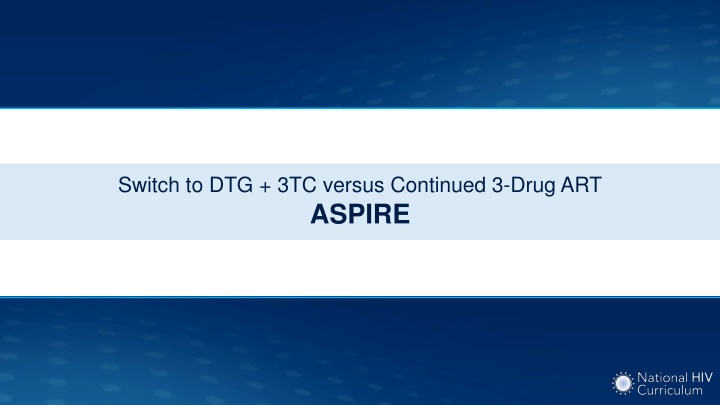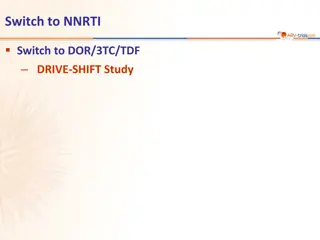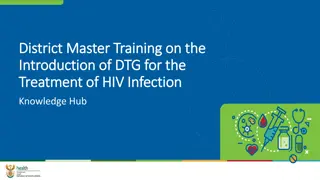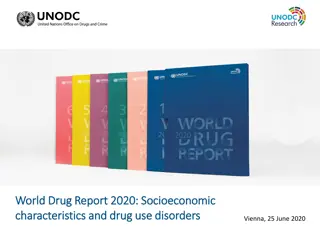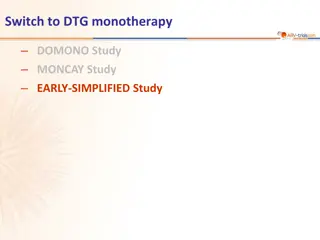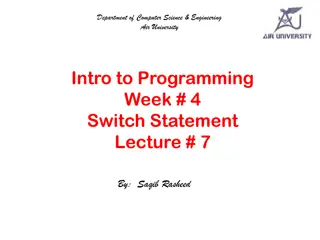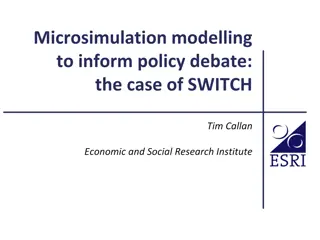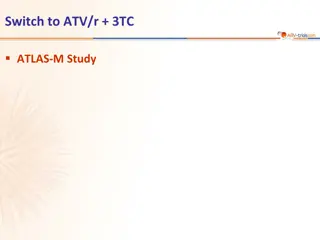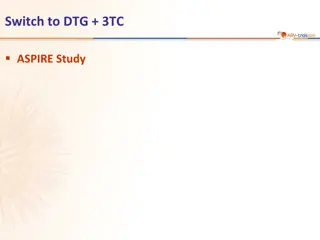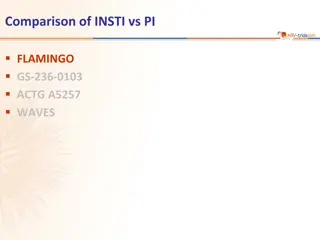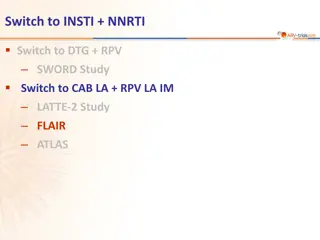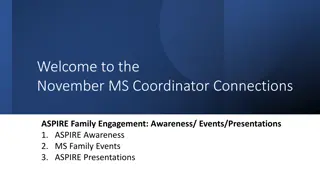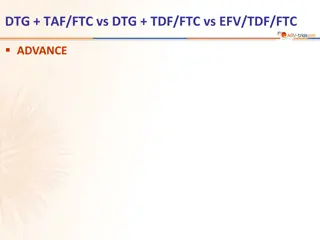Switch to DTG + 3TC vs Continued 3-Drug ART ASPIRE
This study compares switching to Dolutegravir + Lamivudine vs continuing standard 3-drug antiretroviral therapy in individuals with suppressed HIV RNA levels. Results show non-inferiority of the 2-drug regimen and no emergence of drug resistance in participants. Source: Taiwo B et al. Clin Infect Dis 2018;66:1794-7.
Download Presentation

Please find below an Image/Link to download the presentation.
The content on the website is provided AS IS for your information and personal use only. It may not be sold, licensed, or shared on other websites without obtaining consent from the author.If you encounter any issues during the download, it is possible that the publisher has removed the file from their server.
You are allowed to download the files provided on this website for personal or commercial use, subject to the condition that they are used lawfully. All files are the property of their respective owners.
The content on the website is provided AS IS for your information and personal use only. It may not be sold, licensed, or shared on other websites without obtaining consent from the author.
E N D
Presentation Transcript
Switch to DTG + 3TC versus Continued 3-Drug Antiretroviral Therapy ASPIRE: Background Background: Open-label, multicenter, pilot randomized trial that enrolled persons with suppressed HIV RNA levels and compared switch to 2-drug regimen versus continuing standard 3-drug antiretroviral therapy Switch Group Dolutegravir + Lamivudine (n = 44) Inclusion Criteria: - Adults (age >18 years) with HIV - HIV RNA <50 copies/mL at least twice over 48 weeks - Screening HIV RNA <20 copies/mL - Taking any 3-drug ART regimen - No history of virologic failure - No known NRTI or INSTI resistance mutations - No chronic HBV - CrCl 50 mL/min Continue Group Continue 3-drug ART (n = 45) Source: Taiwo B, et al. Clin Infect Dis. 2018;66:1794-7.
Switch to DTG + 3TC versus Continued 3-Drug Antiretroviral Therapy ASPIRE: Baseline Characteristics ASPIRE: Baseline Characteristics Combined Group Study Population (n = 89) 47 (38-54) 88 60 38 15 680 (498-927) 5.7 (3.7-7.5) 37 33 30 Characteristic Age, years, median (IQR) Male, % White, % Black or African American, % Hispanic ethnicity, % CD4 count, cells/mm3, median (IQR) Time on ART, years, median (IQR) Pre-randomization INSTI, % Pre-randomization PI, % Pre-randomization NNRTI, % Source: Taiwo B, et al. Clin Infect Dis. 2018;66:1794-7.
Switch to DTG + 3TC versus Continued 3-Drug Antiretroviral Therapy ASPIRE: Results at 24 & 48 Weeks Week 24 & 48 Virologic Responses (Intention-to-Treat Analysis) Dolutegravir + Lamivudine 3-Drug Antiretroviral Therapy 100 HIV RNA <50 copies/mL (%) 93 91 91 89 80 60 40 20 41/44 41/45 40/44 40/45 0 24 weeks 48 weeks One virologic failure occurred in the dolutegravir + lamivudine arm; no resistance mutations detected Source: Taiwo B, et al. Clin Infect Dis. 2018;66:1794-7.
Switch to DTG + 3TC versus Continued 3-Drug Antiretroviral Therapy ASPIRE: Conclusion Conclusion: In this randomized pilot clinical trial, dolutegravir plus lamivudine was noninferior to continuation of standard 3-drug maintenance antiretroviral therapy. There was no emergence of drug resistance in the participant who experienced virologic failure while receiving dolutegravir plus lamivudine. Source: Taiwo B, et al. Clin Infect Dis. 2018;66:1794-7.
Acknowledgments The National HIV Curriculum is supported by the Health Resources and Services Administration (HRSA) of the U.S. Department of Health and Human Services (HHS) as part of a financial assistance award totaling $1,021,448 with 0% financed with non-governmental sources. The contents are those of the author(s) and do not necessarily represent the official views of, nor an endorsement, by HRSA, HHS, or the U.S. Government. For more information, please visit HRSA.gov. This project is led by the University of Washington s Infectious Diseases Education and Assessment (IDEA) Program.
